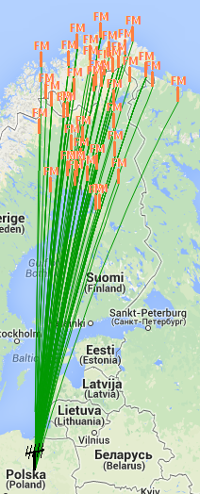Russian Sporadic-E (8.07.2015)
On 8th July I observed a fair Sporadic-E opening from Russia. Both OIRT and CCIR band was full of strong signals. I got almost all stations from the capital of Russia – Moscow. The MUF reached over 108MHz.
I took my RTL-SDR dongle to check the OIRT spectrum and I recorded some I/Q samples of top hour IDs at 2.4 MHz bandwidth. Interesting view – look at the latency and deviation. Each Radio Rossii TX has different settings.

